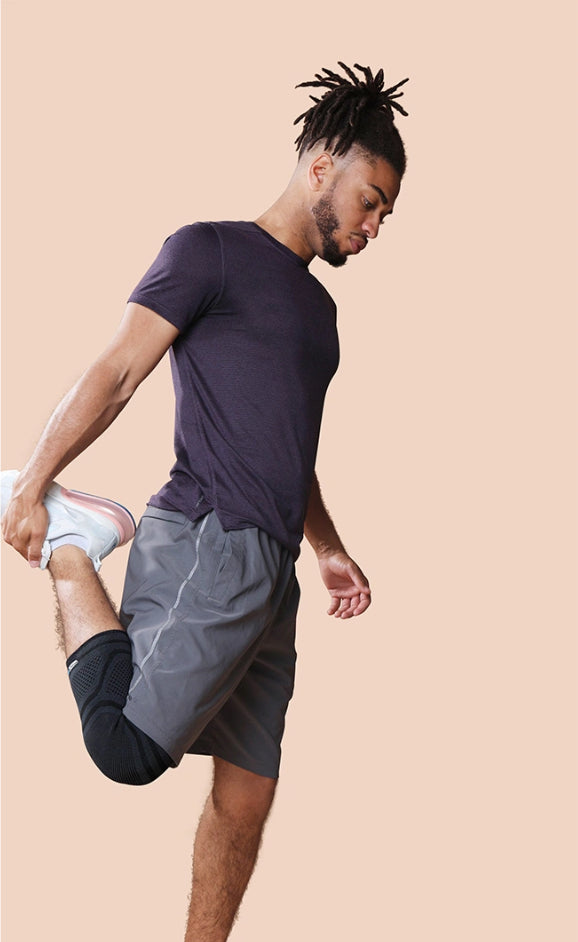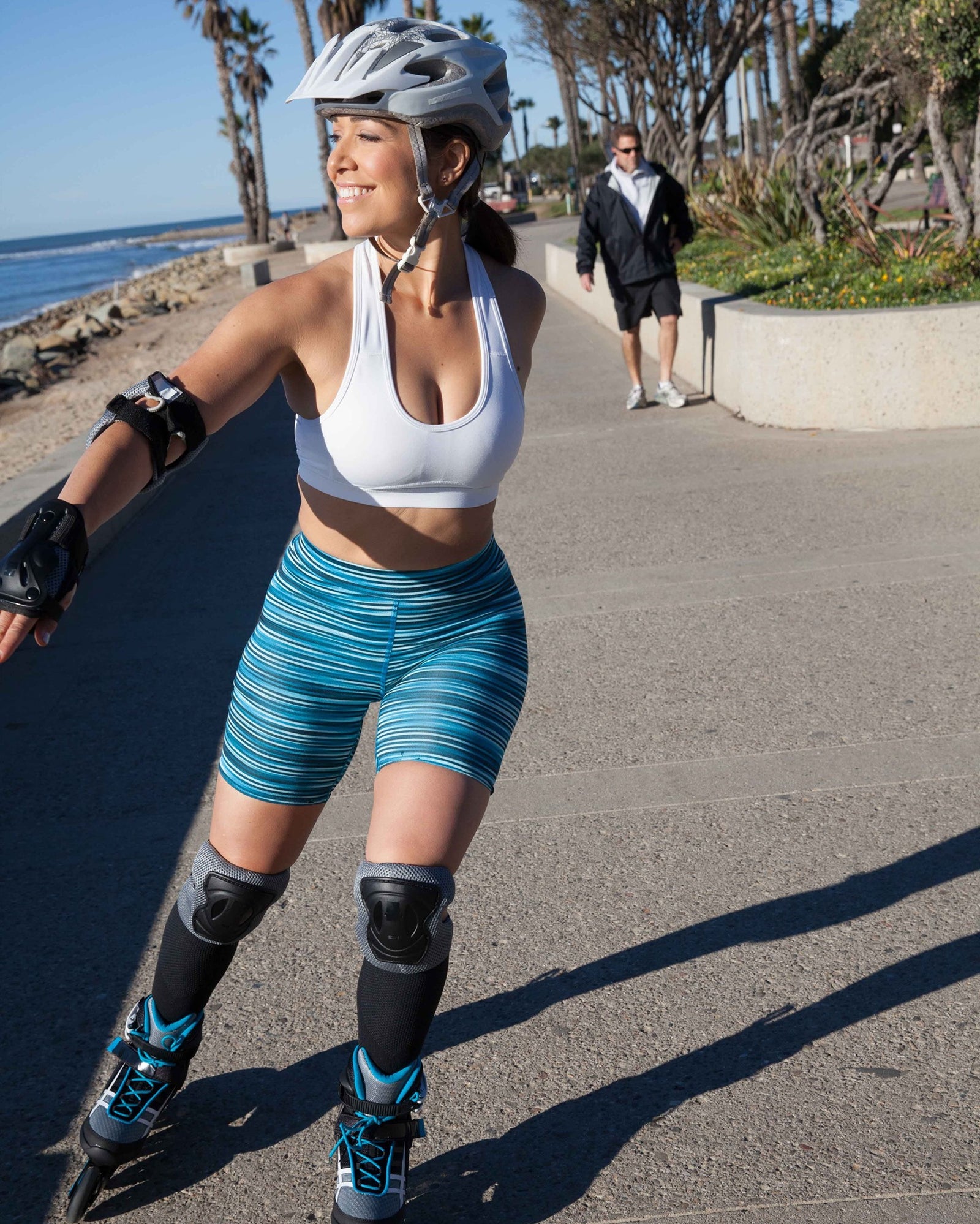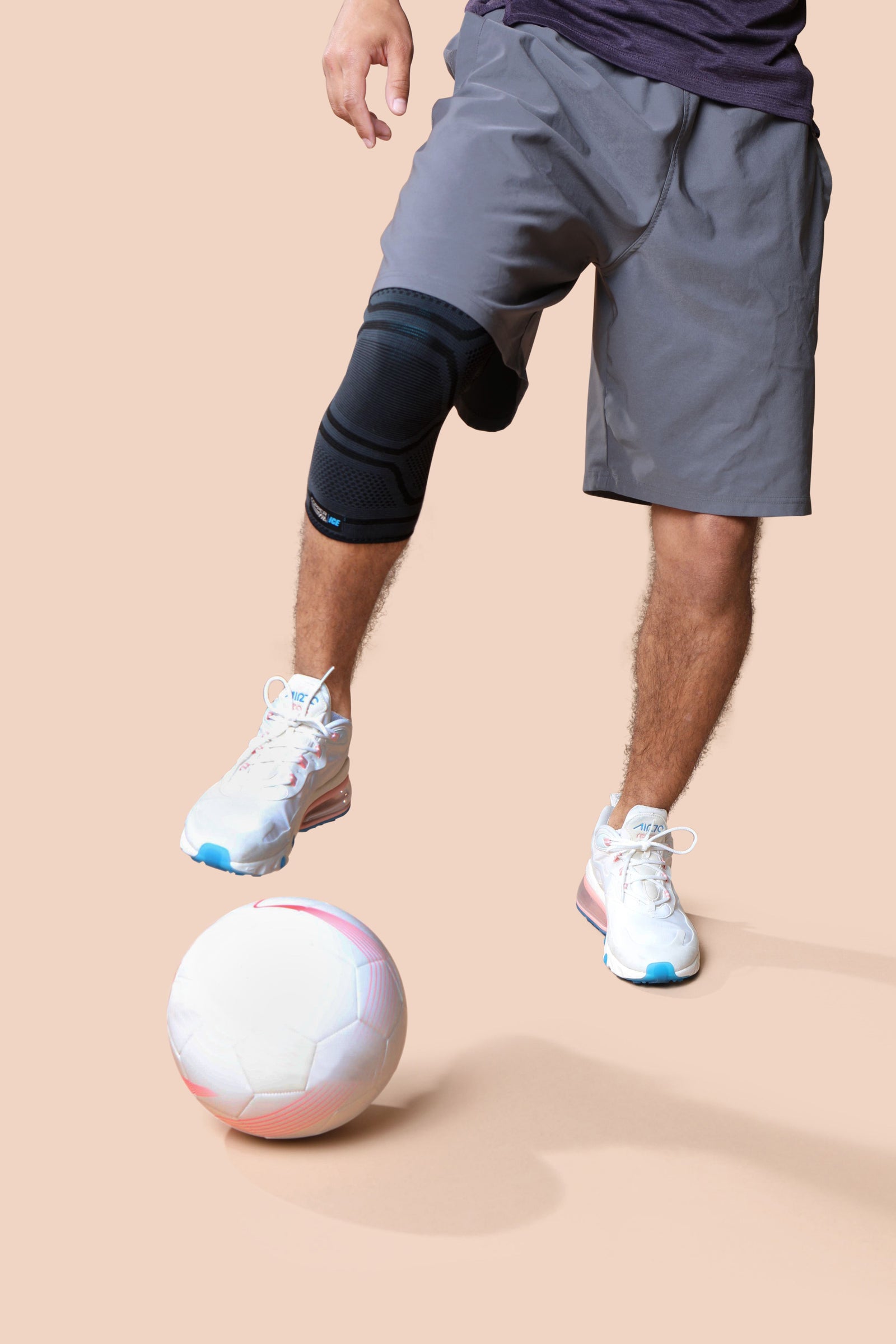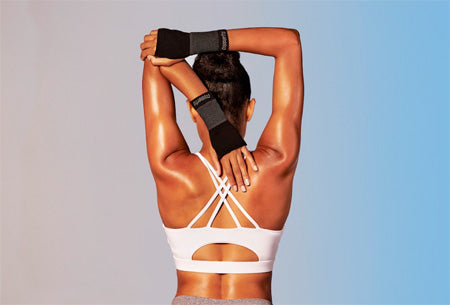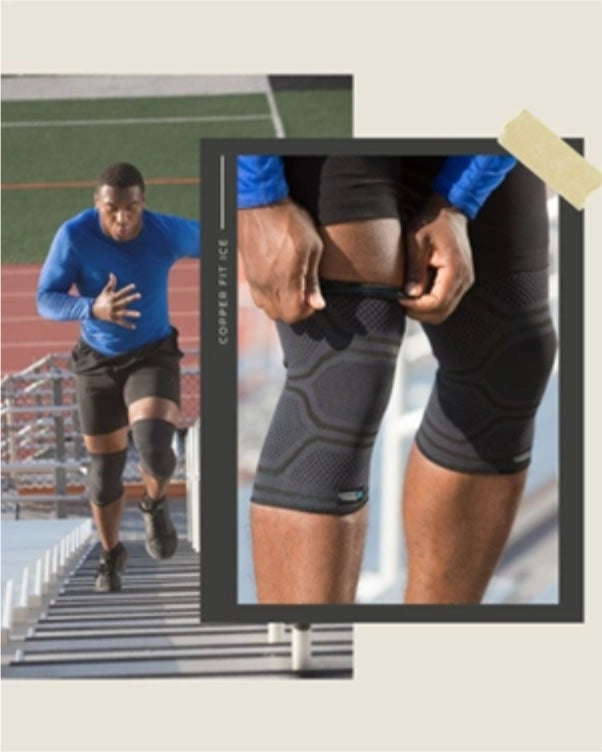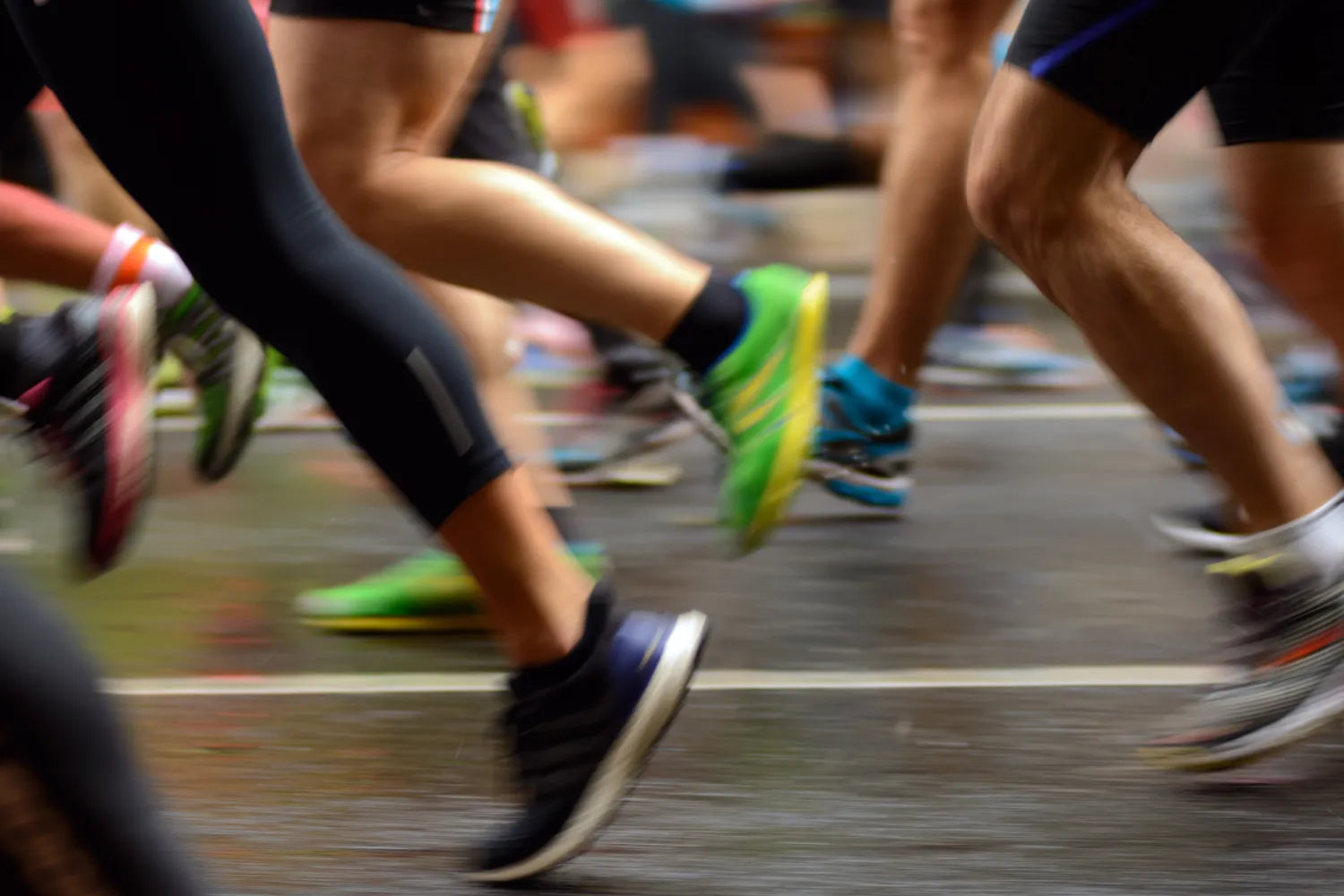
Key Takeaways
- Chafing and blisters are caused by friction, moisture, and heat buildup during repetitive movement.
- Choosing breathable, moisture-wicking, and well-fitted apparel is the most effective way to prevent irritation.
- Compression gear made with flexible, copper-infused, and odor-reducing materials can help support skin comfort and reduce friction while running.
Many runners know the feeling all too well: the sting or itch that starts small and quickly grows until every step feels uncomfortable. Chafing and blisters might seem minor, but they can quickly sideline your training and make recovery longer than it needs to be. These skin irritations happen when repetitive motion, sweat, and heat break down the skin’s natural barrier.
Staying active shouldn’t come with unnecessary discomfort. The good news is that with the right preparation, gear, and recovery habits, you can help protect your skin and keep your runs smooth from start to finish.
This guide breaks down why chafing and blisters happen, how to prevent them, and what to look for in running apparel that supports healthy movement and lasting comfort.
What Causes Chafing and Blisters?
When skin repeatedly rubs against fabric, seams, or even other skin, the top layers of the epidermis begin to weaken. Add moisture and heat, and the surface becomes softer and more vulnerable to irritation.
This uncomfortable combo can lead to chafing or blistering.
-
Chafing: Happens when friction causes small abrasions on the skin’s surface. It can look red and bumpy and may feel raw, especially in high-friction areas like the inner thighs, underarms, or around waistbands.
- Blisters: Occur when deeper friction separates layers of skin, forming a fluid-filled pocket. This pocket acts as the body’s built-in cushion, but it can be painful and slow to heal.
Sweat and salt only add to the problem. When sweat dries, salt crystals remain on the skin, acting like fine sandpaper that can increase irritation. Runners are especially prone to this in warm weather, long-distance training, or when wearing non-breathable clothing.
So, how can you prevent these unpleasant issues while still going all-out on your runs? It’s all about supporting your body’s natural ability to move, recover, and perform better.
Tips To Prevent Chafing and Blisters When Running
Protecting your skin means fewer setbacks and more consistent progress. Here are some ways to keep your skin supported while crushing those miles
1. Keep Skin Dry and Protected
Your skin needs a little extra support to handle long runs and tough workouts. A proactive routine before and after running helps maintain skin health and prevent recurring irritation.
-
Use Anti-Chafing Balms or Powders: These products create a light, protective layer between your skin and your clothing. Apply them to high-friction areas (thighs, underarms, feet, or waistband zones) before your run. Choose options that are non-greasy and sweat-resistant so they stay effective for the entire workout.
-
Stay Hydrated: Healthy, hydrated skin is more resilient. When we’re dehydrated, the salt concentration in our sweat increases, which can cause more irritation and friction as sweat dries on our skin. Drinking enough water before, after, and during a run can help prevent this, while also helping maintain skin elasticity for added resilience to irritation.
- Limit Heat and Layering: Too many layers can trap heat and moisture, which increases the risk of friction. Choose lightweight, breathable clothing, and adjust your layers based on temperature and humidity. On colder days, opt for moisture-wicking base layers underneath outerwear to help regulate body temperature without trapping sweat.
2. Choose the Right Running Apparel
The clothing you wear can make the difference between a smooth, enjoyable run and one that ends with soreness and irritation. The goal is to create a barrier that supports your skin instead of working against it.
-
Go Seamless and Form-Fitting: Loose or poorly designed clothing can rub with every stride, while cotton and rough seams absorb sweat and hold it against your skin. Instead, choose form-fitting, seamless designs that move with your body and help reduce unnecessary friction.
-
Prioritize Breathability and Moisture Control: When skin stays dry, friction decreases dramatically. Look for materials designed to pull moisture away from the skin, often labeled as moisture-wicking or quick-dry. These fabrics allow sweat to evaporate faster, helping to maintain a comfortable body temperature while keeping your skin protected.
- Find the Perfect Fit: Running apparel should feel snug, but never restrictive. Fabric that bunches, twists, or shifts increases friction and creates pressure points. Before heading out for a long run, take a few minutes to adjust your clothing, check seams, and ensure your gear feels secure but natural against your skin.
Remember, prevention starts with awareness. Paying attention to what you wear and how it feels during a run is one of the simplest ways to protect your skin and support a smoother, more comfortable experience.
3. Reduce Blisters With the Right Sock Strategy
Your feet take the brunt of every stride, so choosing the right socks is one of the most effective ways to avoid blisters and irritation. The wrong pair can turn a great run into a painful experience, while the right ones can help support every mile.
-
Pick Technical Running Socks: Avoid cotton, which holds moisture. Instead, choose technical fabrics designed for performance, like polyester blends or compression socks that wick away sweat and stay securely in place.
- Look for Smart Design Details: Well-made running socks include features that target comfort and durability, like seamless toes to prevent rubbing and irritation, mesh zones for breathability, cushioned heels and arches to support longer runs, and compression to reduce movement inside the shoe and support healthy circulation.
Footwear and Fit: The Foundation of Comfort
The right shoes are your first line of defense against blisters. Ill-fitting footwear creates pressure points and friction, especially during long runs or high-mileage training. Make sure your shoes match the shape and width of your feet, leaving enough room in the toe box for natural movement.
Getting professionally fitted is worth it. Feet swell during extended runs, and a slightly larger size can help reduce rubbing around the toes and heels. Check for hot spots or points of friction during shorter runs before committing to a race or long-distance workout. If you feel consistent rubbing early on, it’s a sign your shoes need adjusting or replacing.
Running shoes also have a lifespan. As the cushioning and lining wear down, friction increases. Replacing them every 300–500 miles helps maintain support, comfort, and protection. The right fit, paired with breathable socks, goes a long way toward keeping your feet free from irritation.
Post-Run Care: How To Support Your Skin’s Recovery
After every run, take a few minutes to care for your skin and gear. These small habits help your body recover and prepare for your next workout.
-
Clean and Dry Thoroughly: Wash off sweat and salt immediately after your run. Let your skin air dry before dressing to avoid trapping moisture.
- Soothe and Restore: Apply a gentle recovery cream or cooling wrap to help ease tension and refresh tired muscles.
Remember, as you take steps to support your muscle recovery, give your skin a little attention, too!
Smart Training Habits for Long-Term Comfort
A few mindful habits can make every stride feel better:
-
Increase Mileage Gradually: Sudden jumps in distance can increase friction and fatigue. Slow progression allows your body and skin to adapt.
-
Prioritize Rest Days: Consistent rest supports recovery and prevents irritation from overuse.
- Track What Works: Note which fabrics, products, and distances feel best for you. Small adjustments lead to steady improvement and fewer setbacks.
By paying attention to these details, you build long-term resilience, helping your skin, muscles, and motivation stay strong.
Frequently Asked Questions
What are the best materials to prevent chafing while running?
Moisture-wicking and breathable fabrics are ideal. Compression gear made with copper-infused, flexible materials helps support dryness, reduce odor, and minimize friction.
How can I stop blisters from forming on long runs?
Wear technical running socks that fit snugly without sliding. Look for seamless, cushioned designs that reduce rubbing and keep your feet dry.
Is compression gear good for preventing irritation?
Yes, compression socks and sleeves help keep fabric in place, reducing skin movement and friction. They also support circulation and promote more comfortable recovery.
Stay Active, Stay Comfortable
Here at Copper Fit, we believe that staying active should always feel empowering, not uncomfortable. Our compression gear is designed to help support your body’s natural performance, using breathable, flexible, and moisture-wicking copper-infused materials that move with you.
Whether you’re training for your first 5K or pushing for a personal best, comfort matters. We’re here to help you move freely, feel supported, and keep doing what you love — one step at a time.
Sources:
Chafing Causes, Treatment & Prevention | Cleveland Clinic
Dietary water affects human skin hydration and biomechanics | PMC

